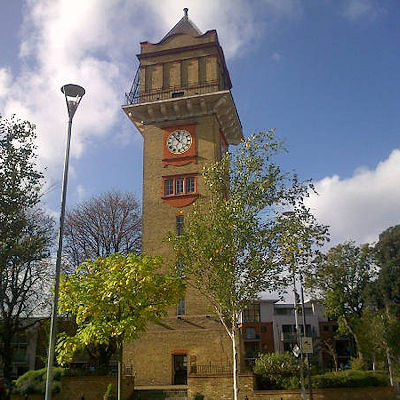
Like us on Facebook
PLACE NAMES


 
|
|
Hither Green
|

|
|
|
Hither Green is a district in south-east London, England, in the London Borough of Lewisham. It lies south of Lewisham, 6.6 miles (10.6 km) south-east of Charing Cross, and on the Prime Meridian.
Growing extensively with the arrival of the railways, Hither Green is characterised by late 19th and early 20th century Victorian and Edwardian domestic architecture, most notably the Corbett Estate. The railway runs through the centre of the area, with Staplehurst Road and its shopping parade to the east, and Hither Green Lane to the west. The lane dates back to Roman times and runs between the Quaggy and Ravensbourne rivers.
Hither Green is relatively peaceful and is noted for its "village" like feel and friendly community spirit. It is situated close to shopping facilities in Blackheath, Lewisham and Catford. It also enjoys fast, frequent transport links to the City and West End as well as connections with the Docklands Light Railway in Lewisham and East London Line in New Cross (now the London Overground). Trains times of as little as 10 minutes to London Bridge at certain times and direct routes to Charing Cross and Cannon St have seen the area become increasingly popular.
From 1978 to 1998 Hither Green was the name of the electoral ward that covered the area - since 2002 the ward that covers the Hither Green area is Lewisham Central.
The area is known for the Hither Green rail crash, in which 49 people were killed in 1967.
Hither Green acquired its name as it was closer to Lewisham than Further Green located on Verdant Lane. The original Hither Green was located where the present day George Lane intersects with Hither Green Lane. The area now occupied by Hither Green is thought to have originally been a hamlet called Romborough, which was wiped out in the Black Death.
Hither Green had remained a largely wooded area through the medieval times but by the 18th century most of the trees had been felled, and the first houses were built. Additional houses appeared through the 19th century, many of them quite substantial residences.Mountsfield Park opened in August 1905 and has grown through several acquisitions since then. The location of the original park included the substantial residence called Mountsfield, home of noted entomologist Henry Tibbats Stainton. The house was demolished but remnants of the garden remain.
Additional acres were bought from the School Board for London and six allotments from Trinity College. And when Charlton Athletic football club gave up the football ground at the bottom of the hill in 1923 the park had grown to 28 acres.
Bombing damage to a terrace of houses along the south side of George Lane saw this also added to the park. The final addition came in 1994 when a large majority of the Catford Boys School playing field was added.
Other nearby parks include Manor House Gardens and Manor Park to the east.
|
 Feel free to Email me any additions or corrections Feel free to Email me any additions or corrections
LINKS AVAILABLE TO YOUR SITE
| |





